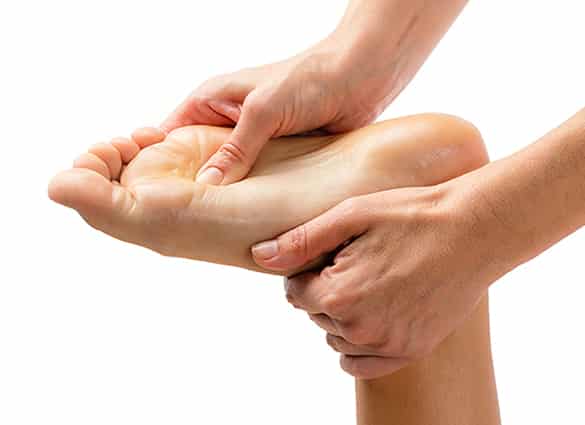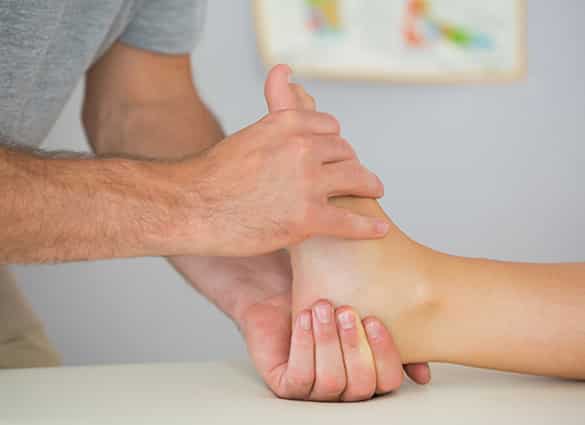Highly developed and biomechanically complex
The human foot is a highly developed and biomechanically complex structure with 26 bones and 33 joints. With so many moving parts, supporting your entire body weight, sometimes things can go wrong! If any of the joints in the foot or ankle are not functioning well, it very often leads to tissue stress and pain, either at that joint or somewhere else in the foot or leg. Foot mobilisation therapy plays a crucial role in enhancing functionality and easing discomfort in feet and legs.

What is Foot Mobilisation Technique (FMT)?
Foot Mobilisation Technique (FMT) is a specialized podiatry treatment method specifically developed to improve the function and ‘freedom of movement’ of joints in the foot, ankle and knee.
FMT is a hands-on manual therapy used by trained Podiatrists that is targeted at freeing up restrictions in the joints and surrounding soft tissues, enabling ease of movement, improved joint function and alignment, resulting in relief of foot, ankle and knee pain.
We commonly use FMT in combination with laser therapy to reduce swelling and pain, foot orthotics to improve foot posture, strapping, footwear changes and home exercise programs to target foot strength and flexibility issues.


What conditions can be treated with FMT?
There are numerous foot and leg problems that can be relieved by the inclusion of FMT in the treatment plan. These conditions include:
- Plantar fasciitis;
- Heel pain;
- Achilles tendon pain;
- Foot or ankle osteoarthritis;
- Morton’s neuroma or bursitis;
- Bunion pain;
- Knee or patella pain;
- Tendon pain or injuries;
- Sesamoiditis;
- Ball of foot pain;
- Ankle instability;
- Stiff, tired or arthritic feet.
What to expect from FMT treatment?
FMT treatment is similar to the mobilization and manipulation treatment your physiotherapist, osteopath or chiropractor may use for other areas of your body (eg; spine, neck, shoulder). FMT is a podiatry treatment method based on our in-depth knowledge and understanding of the anatomy, and function and motion of the joints of the foot and ankle. Our podiatrists in Brisbane Northside know feet better than anyone!
FMT is generally not a painful treatment. We usually find that most stiff joints will loosen well after only a few minutes of corrective movement. You may expect to be a little tender after the treatment as the joints begin to move more freely again. Occasionally symptoms can get slightly worse when we restore motion to ‘stuck’ or ‘restricted’ joints, however, functional improvement and pain relief usually occur quite rapidly. The action of FMT helps the body to heal itself and improves joint function and comfort.


How Often Do I need to come back for FMT?
FMT is effective and most patients feel improvements in movement and pain quickly, however, for optimal long-lasting results more than one session is usually required. For the best outcomes, FMT is performed by your Podiatrist at more frequent intervals to begin with (eg. Once-twice weekly for 3 weeks). As your mobility and pain improves, your treatments will become less frequent.
It is important to also remember that for best results, FMT is used in combination with other podiatry treatment methods and these will depend on your individual causative factors.
The Next Step
If you would like to know if FMT is an option for your foot or ankle problem, contact our friendly team at Foot Health Clinic to have your questions answered or book online for an appointment.
Our podiatrists are trained in FMT and can detect and treat biomechanical problems that cause injury, pain and disability.


